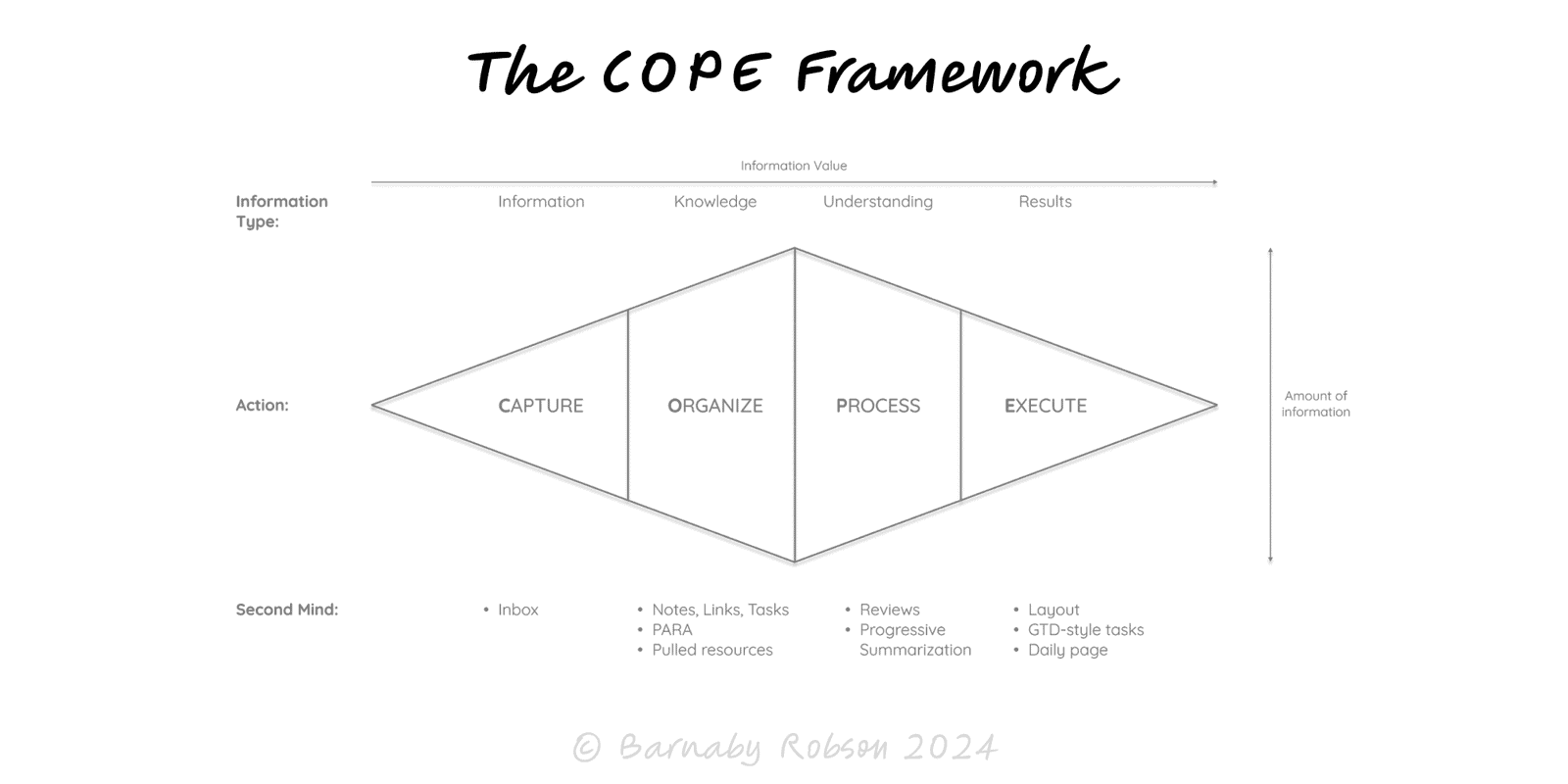The COPE framework
Create content once in a structured, presentation-agnostic form, then reuse it across channels, devices and formats with minimal rework.
author
Popularised by NPR’s digital team
Model type

About
COPE emerged from large publishers needing to serve the same story to web, apps, feeds and partners. The idea is to separate content from presentation and treat content as modular, API-addressable objects so it can travel anywhere.
How it works – what to map
Single source of truth – one canonical record; derivatives are generated, not retyped.
Structured content – fields and components (title, excerpt, body blocks, figure, author, taxonomies, metadata).
Presentation agnostic – no styling inline; templates/themes render per channel.
APIs everywhere – content retrieved/assembled via API for web, apps, feeds, print, partners.
Reuse by composition – smaller components (quotes, facts, images) can be recombined into many packages.
Structured content – fields and components (title, excerpt, body blocks, figure, author, taxonomies, metadata).
Presentation agnostic – no styling inline; templates/themes render per channel.
APIs everywhere – content retrieved/assembled via API for web, apps, feeds, print, partners.
Reuse by composition – smaller components (quotes, facts, images) can be recombined into many packages.
Use cases
Omnichannel publishing – website, newsletter, mobile app, partner feeds from the same canonical entry.
Knowledge bases / docs – one update fans out to product pages, PDFs and in-app help.
Marketing assets – reuse snippets, images and CTAs across campaigns with consistent metadata.
Personal sites with models – one mental model entry powers archive cards, detail pages and social cards.
Knowledge bases / docs – one update fans out to product pages, PDFs and in-app help.
Marketing assets – reuse snippets, images and CTAs across campaigns with consistent metadata.
Personal sites with models – one mental model entry powers archive cards, detail pages and social cards.
How to apply
Model the content – define fields/components you’ll need (e.g. Author, Background, Use cases, Pitfalls, Featured image, Categories).
Write presentation-free – avoid inline styles; keep headings, lists and figures as clean blocks.
Add rich metadata – categories, optional tags, aliases, excerpt, canonical URL, image alt text.
Publish via templates – let layouts/style live in themes or block templates; don’t duplicate content.
Automate derivatives – generate open-graph cards, RSS/JSON feeds, and newsletter snippets from the same record.
Govern – versioning, approvals and change logs so updates cascade safely.
Write presentation-free – avoid inline styles; keep headings, lists and figures as clean blocks.
Add rich metadata – categories, optional tags, aliases, excerpt, canonical URL, image alt text.
Publish via templates – let layouts/style live in themes or block templates; don’t duplicate content.
Automate derivatives – generate open-graph cards, RSS/JSON feeds, and newsletter snippets from the same record.
Govern – versioning, approvals and change logs so updates cascade safely.
pitfalls and cautions
Channel-first drafting – embedding layout in the copy breaks reuse later.
Poor content models – too few fields (can’t reuse) or too many (author fatigue). Start minimal, iterate.
Metadata neglect – missing excerpts/alt text/taxonomies kills discovery and downstream rendering.
Manual duplication – copying between posts creates drift; always reference the canonical.
Translation/locale gaps – plan fields for locale variants and image/text substitutions.
Poor content models – too few fields (can’t reuse) or too many (author fatigue). Start minimal, iterate.
Metadata neglect – missing excerpts/alt text/taxonomies kills discovery and downstream rendering.
Manual duplication – copying between posts creates drift; always reference the canonical.
Translation/locale gaps – plan fields for locale variants and image/text substitutions.
